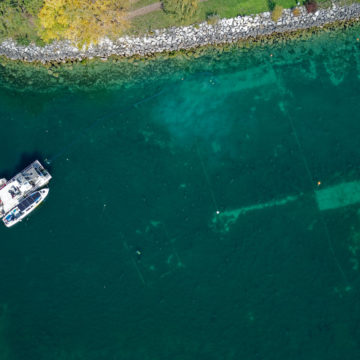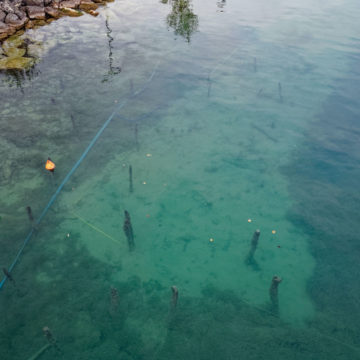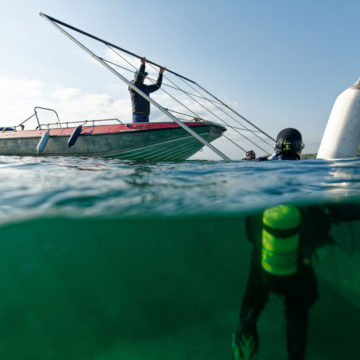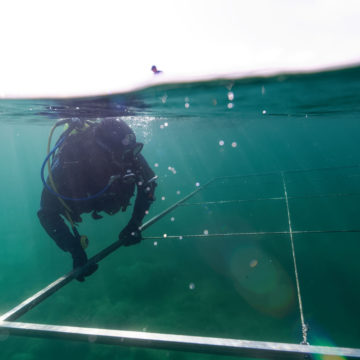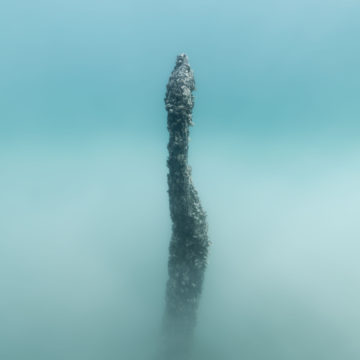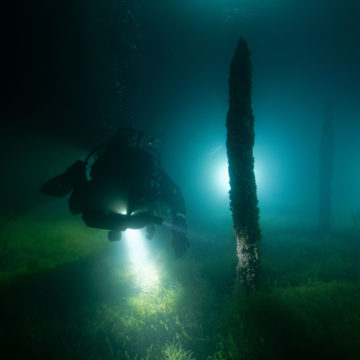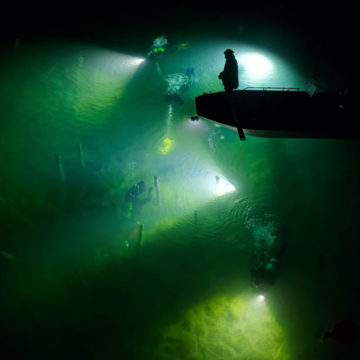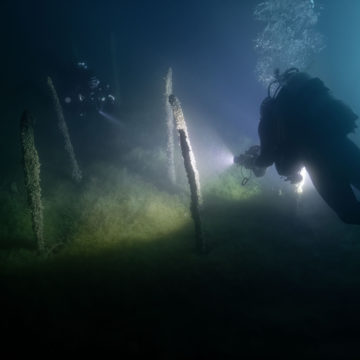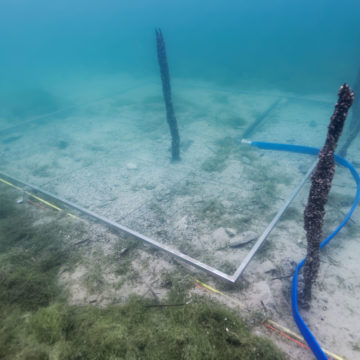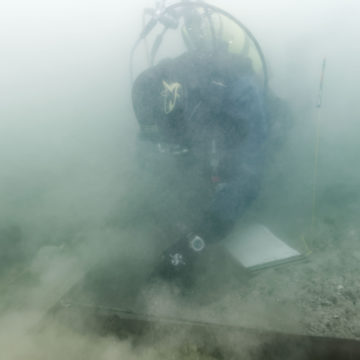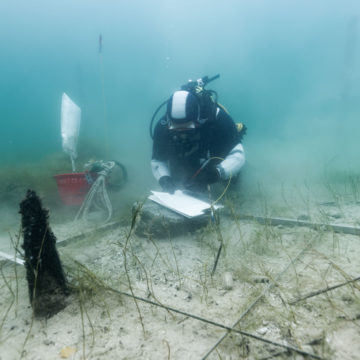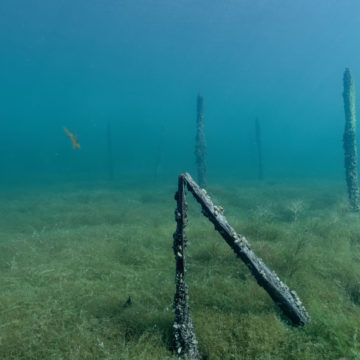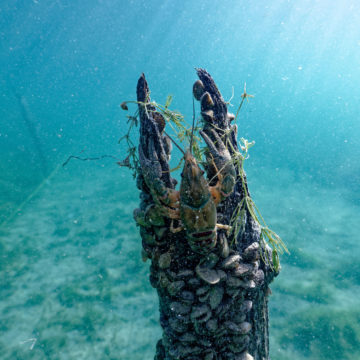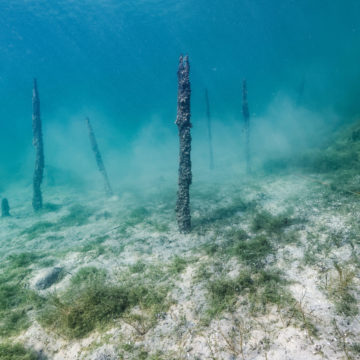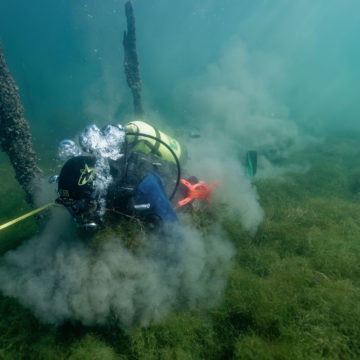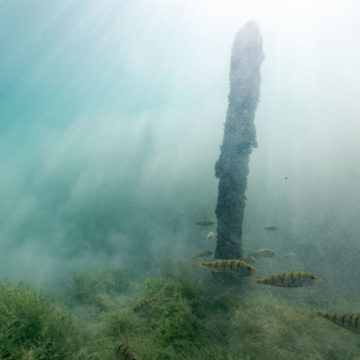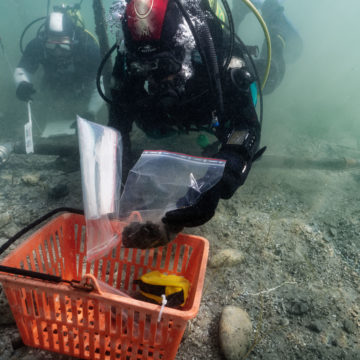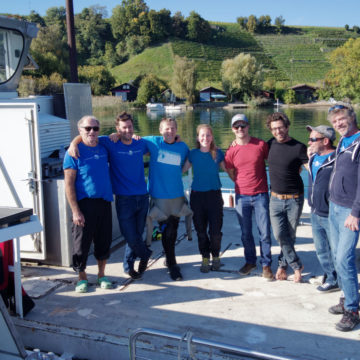For its fourth and final mission of 2022, the Octopus Foundation team returned to the shores of Lake Neuchâtel, in Switzerland.
The main objective of these 10 days was to study the underwater remains of a pile-dwelling village from the Final Bronze Age (850 BC), under the scientific direction of Neuchâtel archaeologist Fabien Langenegger.
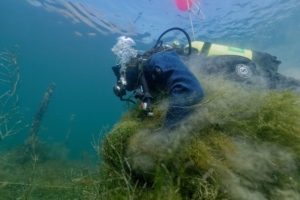 This dendrochronologist (“The man who made the trees speak“) and archaeologist of the Office of Heritage and Archeology of the canton of Neuchâtel (OPAN) is among other things responsible for monitoring the submerged heritage of Lake Neuchâtel. Unfortunately, it happens that Fabien Langenegger notices a significant erosion in this lake, which can deteriorate or even destroy certain archaeological sites, some of which are listed as UNESCO World Heritage Sites.
This dendrochronologist (“The man who made the trees speak“) and archaeologist of the Office of Heritage and Archeology of the canton of Neuchâtel (OPAN) is among other things responsible for monitoring the submerged heritage of Lake Neuchâtel. Unfortunately, it happens that Fabien Langenegger notices a significant erosion in this lake, which can deteriorate or even destroy certain archaeological sites, some of which are listed as UNESCO World Heritage Sites.
But before being able to find and document any historical remains, the divers first had to spend hours clearing the underwater study area. Indeed, the abnormally high temperatures of this summer and this autumn benefited the development of algae which largely covered the shallower parts of the bottom of the lake.
Once cleared of their layer of dense vegetation, the two areas, each measuring 4 meters by 10 meters, could be meticulously excavated by the divers. The location of each of the objects found (here essentially pieces of ceramic pots used by our distant ancestors to cook and store food) are recorded with precision and then taken out of the water to be studied.
 The location and height of each of the wooden piles are also recorded in drawings and photos to determine how the village was built. For example, two stakes next to each other can designate the corner of a house. So much important information to understand the way of life of humans in the Final Bronze Age.
The location and height of each of the wooden piles are also recorded in drawings and photos to determine how the village was built. For example, two stakes next to each other can designate the corner of a house. So much important information to understand the way of life of humans in the Final Bronze Age.
At the end of the mission, the team was able to observe that the area studied closest to the shore showed contamination by contemporary objects, while the area offshore had suffered from greater erosion probably linked to the currents of the lake.
In addition, it appears that this village has unfortunately been looted several times in the past. This looting took place during periods of great drought, during which it was possible to walk with dry feet right in the middle of the remains of the village.
Despite this, the fact remains that this village is indeed of great archaeological interest since it is one of the last built in history by the pile dwellings.

